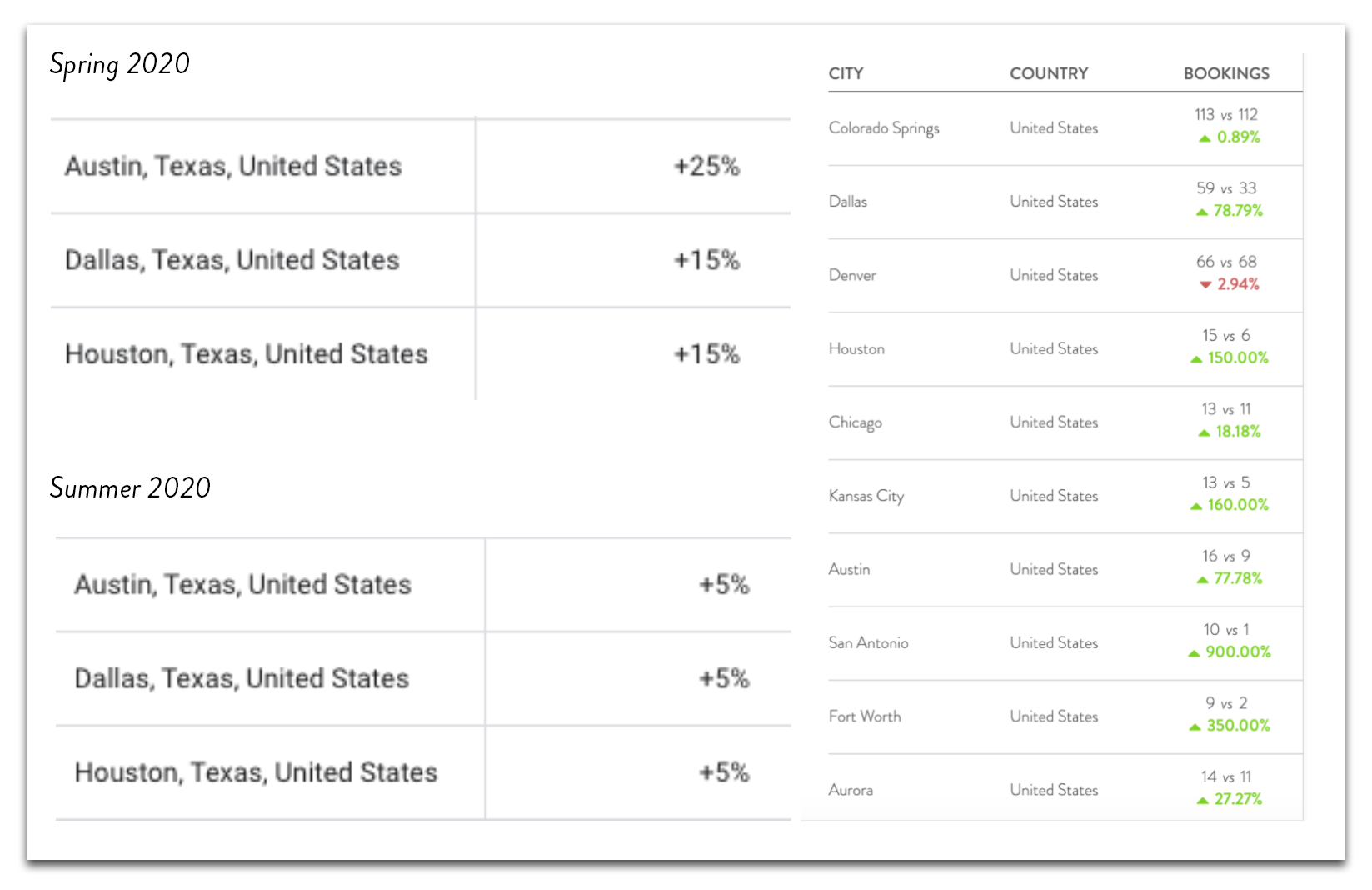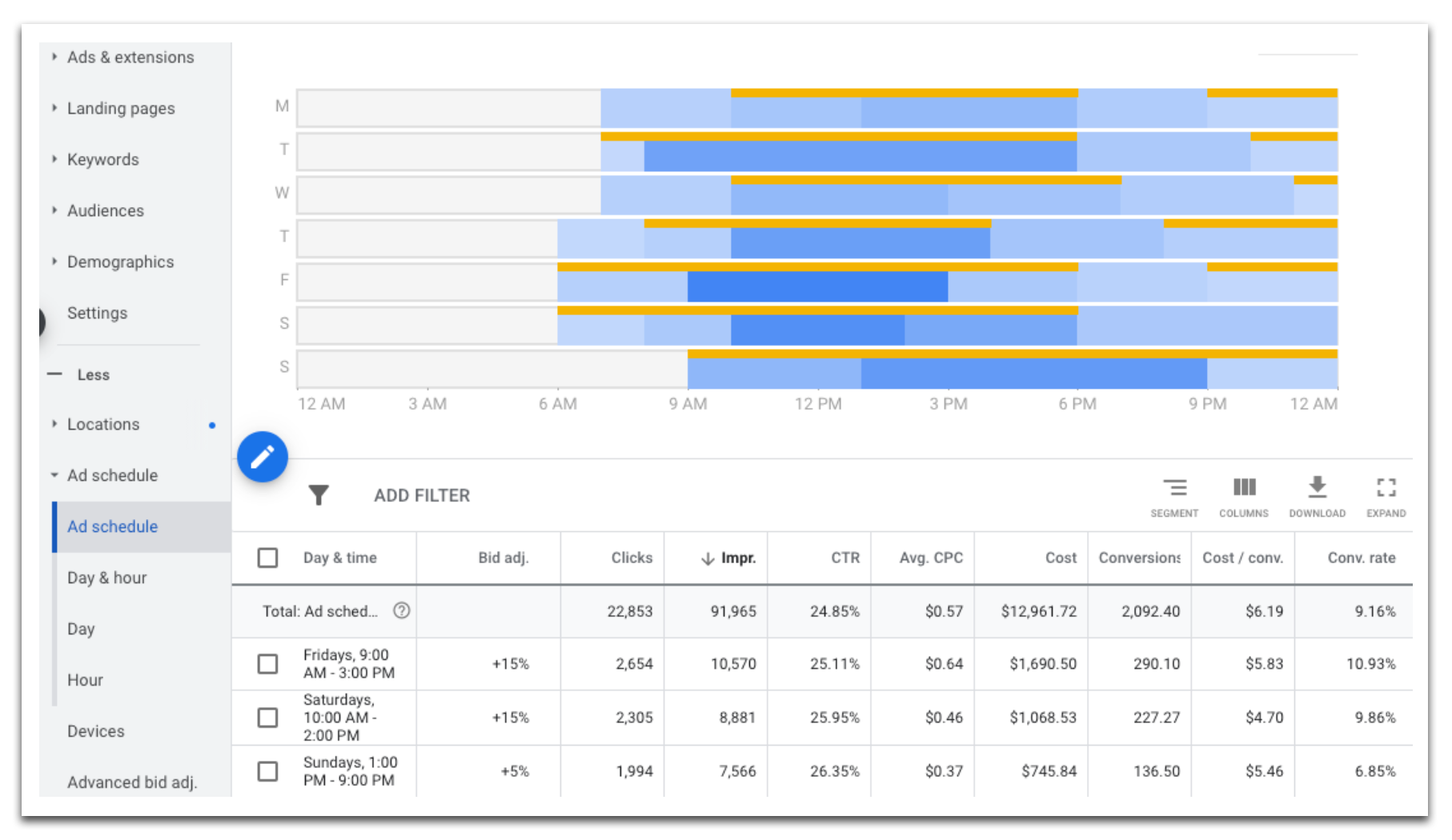In part 1 of this series, we focus on Getting Your Targeting Settings Dialed
Google Ads are very complex and can be optimized in countless ways. In this three-part blog series, we are going to tell you about three areas of Google Ads for tour operators that we have seen to be most effective when optimized correctly. In part one, we will focus on targeting settings. If you’d like to learn more about our Google Ads management as a service, you can contact us here!
There are many targeting settings we feel are important to optimizing your campaign performance, but we will focus on 3 specific settings below.
1: Location Settings
Of course, targeting the geographic locations that give you the most business is paramount, but there is one particular advanced setting every Google advertiser needs to be aware of.
Under the campaign view, ‘Settings’ > ‘Locations’, there is a ‘Location Options’ dropdown at the bottom. There are 3 targeting options:
-
- “People in, regularly in, or who’ve shown interest in your targeted location”
- “People in or regularly in your targeted locations”
- “People searching for your targeted location”
Google’s “(recommended)” targeting option is option 1. This makes sense for Google as it broadens your reach giving you more clicks and giving Google more money. However, this option might not always make sense for you. To the everyday business owner who is running their own ads, they might oversee this advanced option and be under the impression they are only targeting the geographic area(s) they have chosen. Little do they know they are targeting the entire world and will show up to anyone, anywhere, who includes that location in their search query involving a keyword they are targeting. This is an easy way to spend a lot of money very quickly in areas you might not want to. In order to avoid this, choose option 2 which allows your ads to only show up in the geographic areas you set.
Depending on the goal of your campaign and your industry vertical, you may in fact want to target people outside of your location. If this is the case, it is fine to choose option 1, but we recommend you keep a close eye on your user location report data, meaning where the user actually was when they searched. Google has recently made this a bit more difficult by removing the ‘user location report’, but there is still a way to find this data. You will have to build a custom report in the Google Ads Report Editor. Here you can construct your user location report, compiling the metrics you wish to view and the location data from country, to state, all the way down to zip code. This will help inform locations you might want to add bid modifiers to and more importantly may want to exclude from targeting altogether. Here is a helpful article from Search Engine Land that goes more in-depth on building this custom location report.
*Hint: We like to separate out into two campaigns if the client wants to show up outside of their given location. One local campaign and one campaign targeting everywhere else (excluding the local area). This allows us to effectively control the budgets of local vs. non-local, as well as other settings and overall data organization.
Having organized locations segmented out in your campaign allows the ability to add bid modifiers to each location. Customer purchasing behavior is not uniformly distributed by location throughout the year, neither should your advertising. An example would be a rafting company targeting high converting cities in Texas with a 15-25% increased bid adjustment in the Spring, and only a 5% increased bid adjustment in August.
2: Demographics
The three main demographic targeting options in Google Ads are age, gender, and household income. Once you have a sufficient amount of data to inform your decisions, there are two different ways you can go about utilizing these settings.
- You can narrow your targeting options, preventing people outside of your chosen demographics of seeing your ads. For example, you see 18-24 year olds convert at a very low rate or do not convert at all when they click your ads. You can exclude showing ads to this age group and effectively eliminate wasted ad spend that isn’t giving you a return. Or, as pictured below, if 45-54 year olds give you the highest conversion rate, you could add a 15% increased bid adjustment.
- You can add bid adjustments to different brackets of these demographics. For example, if your data tells you women give you the highest conversion rates, you can add a 10% increase bid adjustment to women, telling Google to bid 10% higher on women who search for your keywords. You want to bid higher here because you have a higher chance of converting.
3: Ad Schedule
A custom ad schedule allows you to display ads or change bids during certain times. Once your Google Ads campaign has a large enough sample size of data (this is not a specific number but whatever you feel is a sufficient amount of data to represent a holistic view of your metrics), you can go into the ad schedule and view different days of the week and different hours of the day to see what performs the best and vice versa.
After analyzing your data, you can make informed decisions on whether to say add a 10% increased bid modifier for 11AM – 2PM on Thursdays, or perhaps only show your ads from 7AM – 10PM every day because you see that no one is converting in the early morning hours or late at night.
This is a great way to really dial in your targeting settings, and as we like to say: the more data we receive, the better our accounts will perform! So don’t forget to continue checking back in on your metrics and making those tweaks and optimizations to be in the best position to serve your ads to the highest converting customers at the right time and in the right place!






